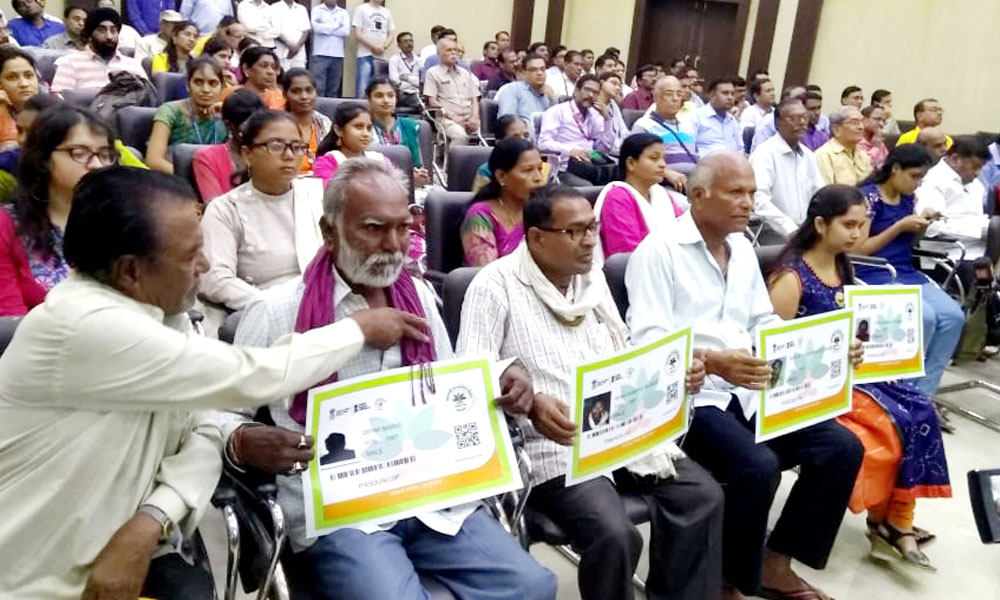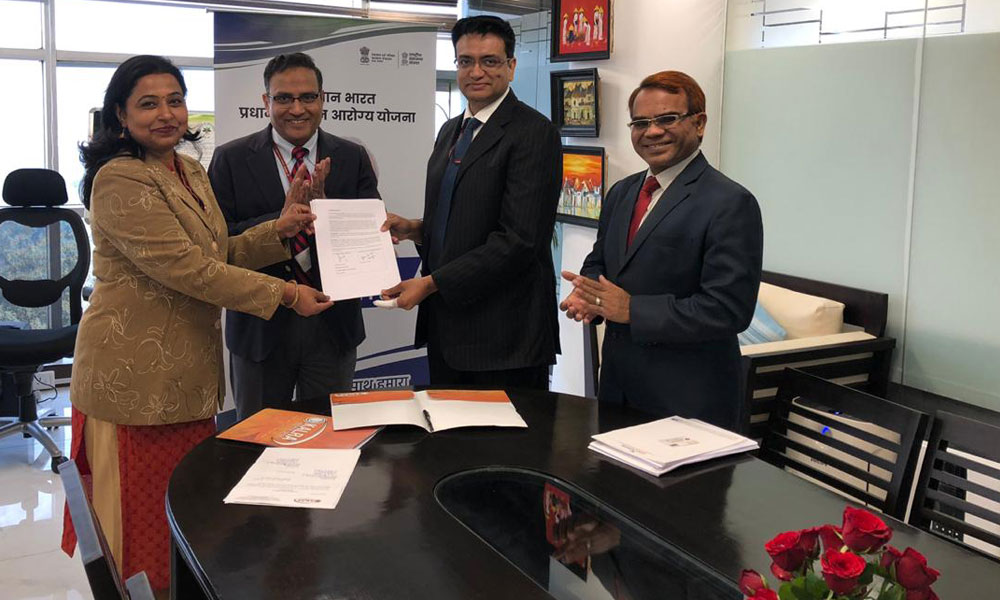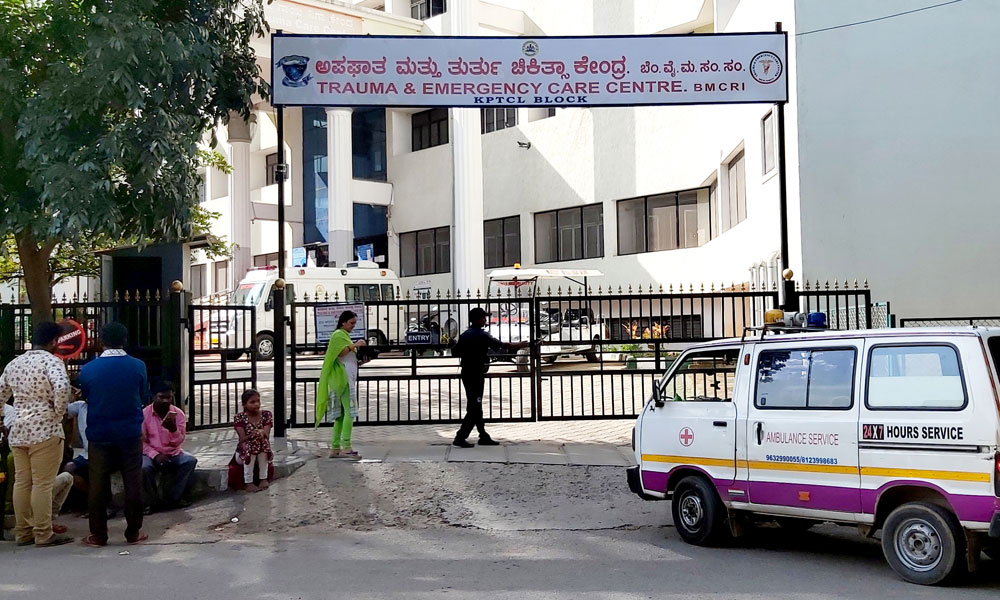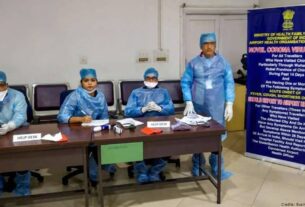In emergencies, poor patients end up paying out of their pockets.
By Jagriti Parakh
With only 39 private hospitals in Bengaluru district empanelled under the Integrated Ayushman Bharat-Arogya Karnataka (ABAK) scheme, poor patients, who visit non-empanelled hospitals during emergencies, end up paying out of their pockets.
Chetan Kumar, Monitoring and Evaluation Department, Suvarna Arogya Suraksha Trust, said that 2,47,485 claims were given prior authorisation (preauth approval) by empanelled government hospitals under the ABAK scheme, certifying that the treatment plan was medically necessary. Of these claims 2,00,345 were submitted and the remaining 47,140 cases have not received treatment under the scheme.
This might mean that these 47,140 patients – which make for 19 per cent of the approved preauth claims – either ended up paying for the treatment that was supposed to be gratuitous or didn’t get treated.

PMJAY Launch event. Source: PMJAY Website
Anand, Coordinator, Suvarna Arogya Suraksha Trust, the nodal agency that is implementing the health scheme, said, “We are trying to empanel more private hospitals, but it is a bit of a tussle. Most private hospitals are reluctant to get empanelled as the current package rates hardly cover the actual procedure costs.”
Shivaji Rao, Manager, Narayana Multispeciality Hospitals, said, “The government package rates for these health insurance schemes are sometimes even lesser than the procedure cost and the hospitals bear the cost, but it should not stop good private hospitals from empanelling, because it is also our responsibility to extend affordable and accessible healthcare facilities to all, even those who lack the resources.”
Arogya Karnataka was co-branded with Ayushman Bharat in Karnataka on October 30, 2018 after the State signed a Memorandum of Understanding (MoU) with the Centre. Following the co-branding, BPL and APL families have an annual health cover of Rs. 5 lakh and Rs. 1.5 lakh per year respectively, with additional assistance of Rs.50,000 in some cases.

Source: PMJAY Website
Under the scheme, the patient must be admitted in a government hospital first. After a screening by the government hospital doctors, a letter is generated by the authorities indicating the required treatment plan. If it is a tertiary or emergency case and suitable facilities aren’t available at the government hospital or referral hospital, the patient is referred to an empanelled private hospital. Only after producing the referral certificate, free treatment is provided at the private hospitals.
Keerthi, a 35-year-old BPL card holder, said, “In February, I had severe chest pain and I went to a community health centre in Devanahalli. They sent me to a referral hospital, which in turn directed me to a private hospital. My old mother was anxiously going from one hospital to another for the referral certificate that we had to produce at the empanelled private hospital. After running from pillar to post for two weeks, we decided to go to a non-empanelled private hospital.”
Another shortcoming of the scheme is that poor migration workers or immigrants from different parts of the country, who are now settled in Bengaluru are unable to reap the benefits of this health cover policy, because of the eligibility criteria stating that the beneficiary must be a resident of the state.
Sandeep, who has a domicile of origin in Uttar Pradesh, but is working in Bengaluru for past three years, said, “I moved to this city three years ago, but last month when I fell sick, I had to go back to my state, because I could not afford the treatment and I was not eligible for the Arogya Karnataka health cover.”
There are 1,650 procedures listed under this scheme, which include 291 simple secondary, 254 complex secondary, 900 tertiary care procedures, 169 emergencies and 36 cross-specialty procedures. While the simple secondary procedures are entirely handled at the government hospitals’ level, for all other procedures patients need to be referred by a government hospital to a private facility.

Kamal Parakh, an insurance consultant, said, “Government should digitize the referral procedure in order to help the families of these patients who need emergency care at private hospitals. This gap between the preauth approval cases and total number of settled claims must be decreased so as to increase the efficiency and accessibility of this scheme.
“To get more private hospitals under the purview of this scheme, government should work a code of conduct that regulates the fee of treatment procedures at these private hospitals to ensure that it is not unreasonably expensive. This way, the difference between the private hospital budget and government package rates can be minimized.”




